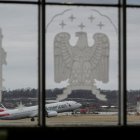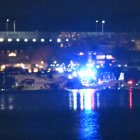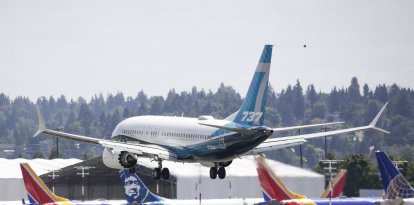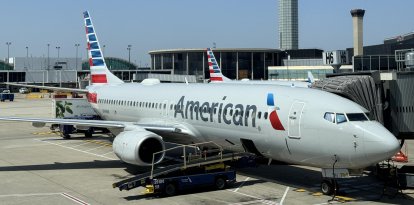Federal Aviation Administration permanently restricts helicopter flights near Reagan National Airport
The move, which makes permanent temporary restrictions imposed after the crash in January, is in response to recommendations from the National Transportation Safety Board.

Ronald Reagan Washington National Airport.
The Federal Aviation Administration (FAA) announced on Friday a permanent restriction on helicopters operating near Ronald Reagan National Airport in Washington, DC, on the same route where last Jan. 29 a mid-air collision between a passenger jet and a military Black Hawk helicopter left 67 dead.
The measure, which makes permanent the temporary restrictions imposed after the accident, responds to the recommendations of the National Transportation Safety Board (NTSB), which warned of the "intolerable risk" posed by the current configuration of the airspace in that area.
The NTSB had previously noted an "alarming number" of near misses in recent years in the busy skies around Reagan National, a key airport located near the heart of the U.S. capital. Federal investigators, who are still analyzing the causes of the January crash, recommended days ago banning certain helicopter flights to reduce congestion and prevent future incidents.
The new FAA order allows limited exceptions, such as presidential flights, police missions and rescue operations, but permanently closes the route previously used by various government agencies, including the Defense Department.

Society
FAA plans to permanently ban helicopters from flying near Ronald Reagan National Airport
Luis Francisco Orozco
The Army expressed support for the FAA's actions
Spokesman Matt Ahearn said Friday that the military will use "alternative routes to mitigate impacts on training and readiness."
The FAA also announced it is reviewing other cities with airports where various types of aircraft converge in shared airspace. Among the metropolitan areas under study are Boston, New York, Baltimore-Washington, Detroit, Chicago, Dallas, Houston, and Los Angeles, in addition to offshore helicopter operations along the Gulf Coast.
For his part, Transportation Secretary Sean Duffy pledged this week that the agency will employ artificial intelligence (AI) to analyze data and detect similar danger zones while prioritizing NTSB recommendations to decongest airspace near Reagan National and prevent helicopters from interfering with aircraft landing paths.
Duffy, on his X account, stated, “We’re going to make the changes necessary, like using AI to identify hotspots to take action preventively instead of retroactively”.
The fact that the data wasn’t properly analyzed to prevent the DCA tragedy makes me angry. Maybe it was because the focus wasn’t on safety, but those days are over.
— Secretary Sean Duffy (@SecDuffy) March 12, 2025
We’re going to make the changes necessary, like using AI to identify hotspots to take action preventively instead… pic.twitter.com/sGG9ZL5gyo
The Jan. 29 crash exposed the vulnerabilities of a densely traveled airspace near Washington, DC.

Updates
Crash at Reagan National Airport: Black Hawk military helicopter collides with American Airlines plane
Emmanuel Alejandro Rondón
About the accident
RECOMMENDATION





















